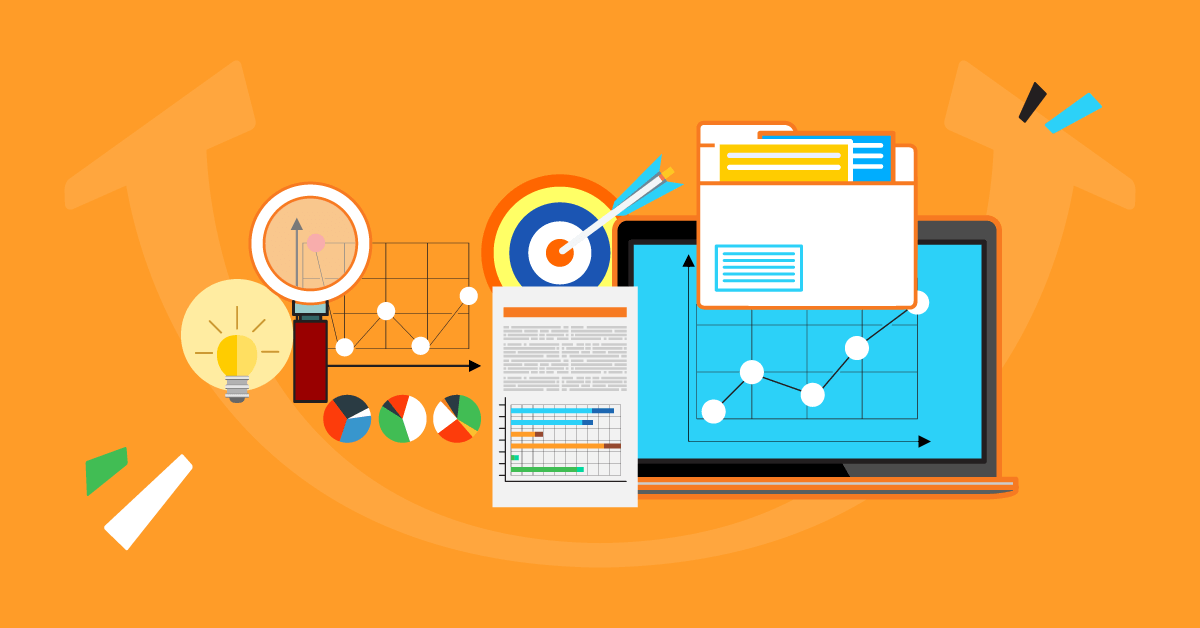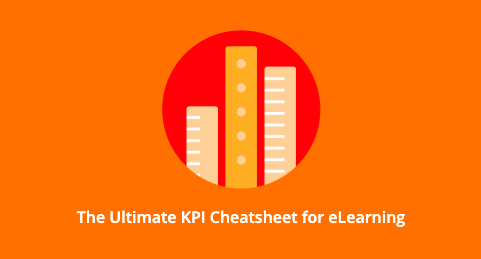Are you measuring training activity or training impact? Do your L&D metrics tell you what employees did or what they learned and applied? Are you tracking data for the sake of it or to drive real business results?
If you’re not 100% sure about the answers, you’re likely tracking metrics that are more ‘vanity’ than ‘sanity’.
Many common L&D metrics don’t tell you much about impact.
‘Hours trained’ is a good example of this, explains Instructional Designer, Dr. Heidi Kirby, in our TalentLMS podcast. When you’re training for something like workplace safety what you want to see happen is a reduction in on-site accidents. Focusing solely on ‘hours trained’ is a mistake. You need to dig deeper.
In this post, we’ll explore the 14 key L&D metrics that matter for employee training, helping you cut through the noise and focus on what truly drives success.
What are learning and development metrics?
L&D metrics are quantifiable data points that track and assess the impact of employee training programs.
Think of them less like a report card and more like a diagnostic tool—revealing the vital signs of your training’s ‘health’. These metrics—things like knowledge gains, skill application, and behavioral changes—show you where your learning and development is thriving and where it needs a boost.
By paying attention to these indicators, you can fine-tune your approach, ensuring every training dollar delivers maximum impact.
Without them, you’re flying blind.
14 key L&D metrics
We’ve established what L&D metrics are. Now, let’s go over the specific L&D metrics that’ll give you the most valuable insights into your training program.
We’ve grouped these into three key categories to help you see the big picture.
Learner-centric metrics
Let’s start with the beating heart of training—the learners themselves. Learner-centric L&D metrics focus on their experience and the immediate outcomes of training.
1. Completion rate
Completion rate is a fundamental measure of employee engagement. It tracks the percentage of learners who finish a training course or training program. While a high completion rate isn’t a guarantee of learning (many learners are guilty of clicking through without truly absorbing), a low completion rate is a definite red flag.
For example, if only half your team completes essential compliance training, it’s time to investigate. Is the material too dense? Is the platform hard to use? Are employees overloaded?
How to calculate this metric:
Completion rate (%) = (total number of learners who completed the course ÷ total notal number of learners enrolled) x 100
Pro tip: Go beyond the overall number. Analyze completion rates by department, team, or job role. This can reveal specific areas where learners are struggling.
2. Active participation rate
This metric separates passive content consumption from active participation in the training process. It does this by looking beyond click rates or completion rates. Instead, you’ll look for learners sparking lively debates in online forums, voluntarily taking practice quizzes, or contributing thoughtful comments. These actions demonstrate a healthy, engaged learning community.
More importantly, active involvement is a strong indicator of knowledge absorption and future application.
How to calculate this metric:
Active participation rate (%) = (total enrolled participants ÷ number of actively engaged participants) x 100
Heads-up: Based on the extent of the course, it may not be possible to obtain every metric.
Active participation can be measured using:
3. Learner satisfaction (feedback scores/surveys)
Learner satisfaction (or training feedback) reflects how learners feel about the training they’ve received. Data for this metric is usually gathered directly through surveys, ratings, or open-ended questions. It is your opportunity to receive unfiltered feedback on what resonated, what didn’t, and where improvements can be made.
For this type of metric, go beyond simple “Did you enjoy this course?” questions. Ask targeted questions like, “How relevant was this training to your everyday tasks?” and “What’s one thing we could do to make this training even better?”
Combining these open-ended responses with rating scales (like 1-5 star ratings) provides both qualitative insights and quantifiable data.
How to calculate this metric:
Average satisfaction score = total sum of all the individual ratings or scores ÷ total number of respondents
Pro tip: Aim for a mix of question types to get a well-rounded understanding of learner sentiment—the best of both worlds.

4. Pre- and post-training assessments (test scores)
Pre- and post-training assessments provide a direct measure of knowledge gain. Observing and testing learners before and after training helps you quantify how much their understanding of the subject has improved.
For example, a group of new hires might score an average of 60% on a pre-training assessment about company policies. After completing the onboarding program, that average jumps to 90% on a post-training test. That’s a clear indication that learning took place.
How to calculate this metric:
Knowledge gained (%) = (post-assessment score − pre-assessment score ÷ pre-assessment score) x 100
Heads-up: Check that your assessments are valid and reliable. They must accurately measure the specific knowledge and skills the training aims to teach, and the training survey questions should be consistent.
Pro tip: Need a helping hand? Check out our guide to the right training survey questions to ask.
5. Knowledge retention rate (follow-up assessments)
This L&D metric measures how much knowledge learners retain over time, typically weeks or months after initial training.
It’s the key to ensuring that training translates into lasting change, not just a temporary bump in scores.
How to calculate this metric:
Knowledge retention rate (%) = (post-assessment score 3 months after training ÷ post-assessment score directly after training) x 100
Pro tip: Use spaced repetition (short quizzes, review sessions, or even just well-timed email reminders) to reinforce learning and boost long-term retention.
6. On-the-job application (observed behaviors/performance data)
On-the-job application checks whether learners are using their new skills and knowledge in their day-to-day work. It’s about real-world impact—arguably the most valuable metric of all.
For this one, you’re looking for tangible evidence of changed behavior and improved performance on the front lines.
For example, after that sales training, are reps actually using those new closing techniques with clients? Or did that leadership course translate into managers providing better feedback?
How to calculate this metric:
On-the-job application rate (%) = (total employees who completed training ÷ number of employees applying skills on the job) × 100
Heads-up: This one requires a bit more effort to track. You should observe employees directly, review performance data, and gather feedback from supervisors.
7. Learner progress rate
Learner progress rate tracks how employees are moving through the material. Its value is in identifying roadblocks and then intervening where necessary to remove them.
For instance, if many learners are stalling out on Module 3 of your new software training, that signals that something needs attention. The content may be confusing, the instructions unclear, or additional resources may be required.
How to calculate this metric:
Learner progress rate (%) = (total enrolled learners ÷ number of learners who have met a defined milestone* or key module) x 100
*such as 50%, 75%, 90%
Pro tip: Use this insight to iterate and improve course content and delivery.
Business impact metrics
Business impact metrics connect broad business outcomes to L&D goals and employee performance. They demonstrate the value of L&D in terms of tangible business results that make stakeholders happy.
8. Performance improvement
Employee performance metrics track if the training is making a difference to key performance indicators (KPIs). It’s about directly linking L&D efforts to measurable improvements that matter to the organization.
For instance, did that conflict resolution training for your customer service team lead to a noticeable drop in complaints? Or an uptick in positive customer satisfaction scores? That’s the kind of tangible employee performance improvement businesses are after.
How to calculate this metric:
Performance improvement (%) = (post-training KPI − pre-training KPI) ÷ pre-training KPI) X 100
Pro tip: Be clear about which KPIs you’re tracking before you roll out the training. This will make measuring the impact far more accurate—and far less of a headache.
9. Productivity gains
Productivity gains measure whether your training programs are making people more efficient—a key ingredient for a thriving business.
For example, signs of higher productivity after training could include employees doing tasks faster, with fewer mistakes, or handling more work with the same accuracy.
How to calculate this metric:
Productivity gain (%) = (post-training productivity − pre-training productivity ÷ pre-training productivity) × 100
Pro tip: Don’t just rely on subjective impressions. Look for concrete data. This will vary according to job role.
Productivity can be measured using:
10. Return on investment (ROI)
Out of all the business impact metrics, this is the big one. ROI shows, in dollars and cents, whether your training investment is paying off.
ROI compares the financial benefits of training (for example, increased revenue, cost savings) to the total costs (development, delivery, learner time).
For example, let’s say you invested $10,000 in a sales training program, and as a direct result, your team generated $30,000 in additional revenue. That’s a hefty ROI—and the kind of number that makes everyone, from the CEO to the newest trainee, take notice.
How to calculate this metric:
ROI (%) = (benefit − total cost ÷ total cost) X 100
Caution: Calculating ROI for training can get tricky. Be realistic in your projections, account for all relevant costs and benefits, and remember that not every positive outcome can be easily quantified. Sometimes, the value of training is more than just numbers.
11. Employee retention
This metric looks at the percentage of employees who remain with the company over a specific period and how this links to training received. It can be a surprisingly good indicator of your L&D program’s overall health.
High retention often means you’re not just teaching skills but also fostering a culture of growth and professional development—and that’s worth its weight in gold.
For instance, if your employee retention rate is noticeably higher than the industry average, it’s a strong sign that your training initiatives contribute to a positive, engaging work environment. Data from LinkedIn backs this up. According to their research, 94% of employees would stay with their company longer if there was an investment in learning.
In turn, that means less time and money spent on recruiting and onboarding replacements.
How to calculate this metric:
Retention rate increase (%) = (retention rate of trained employees* − retention rate of untrained employees** ÷ retention rate of untrained employees) x 100
* Retention rate of trained employees (%) = (number of trained employees still employed after a set period ÷ total trained employees at the start) × 100
** Retention rate of untrained employees (%) = (number of untrained employees still employed after a set period ÷ total untrained employees at the start) × 100
Pro tip: Don’t look at retention in isolation. Pair it with employee satisfaction surveys and exit interviews to clearly understand why people are staying (or leaving).
Operational and efficiency metrics
Operational and efficiency metrics help you optimize your L&D processes and resources.
12. Training cost per learner
Training cost per learner breaks down the total cost of your training program and divides it by the number of participants. It’s a simple yet essential metric for tracking expenses and spotting potential areas for savings.
For example, if your cost per learner is way higher than what other companies are spending, it might be time to look at cheaper options. Maybe that means using more online modules instead of flying everyone out for workshops or finding ways to create content more efficiently.
How to calculate this metric:
Training cost per learner = total costs ÷ the total number of learners.
Pro tip: Don’t just look at the overall cost. Break down expenses into categories (for example, training materials, instructor fees, and technology) to pinpoint exactly where your money is going.
13. Training development ratio
The training development ratio tells you how efficiently you’re creating training content. Specifically, it looks at the time it takes to develop your learning materials relative to the total length of the training itself.
For instance, if it’s taking your team an incredibly long time to develop a relatively short online course, it might be a sign to do some serious training evaluation. Maybe you need to invest in better authoring tools. Or perhaps your team could benefit from some upskilling in instructional design.
How to calculate this metric:
Training development ratio = the number of hours it takes to create the learning material / the total hours of training produced.
Pro tip: It’s not just about speed—it’s about quality, too. A rushed development process can lead to subpar training, so find the right balance.
14. Training time to proficiency
This metric is all about speed—but not just any speed. It measures how long it takes for learners to become competent in the new skills or knowledge after completing the training.
The shorter the time to proficiency, the faster your employees can put their learning into action. And the quicker you’ll see results.
You don’t, for example, want your new sales reps stuck in training limbo for months. You want them hitting the phones and closing deals ASAP.
How to calculate this metric:
Training time to proficiency = Total training hours per employee ÷ time taken to reach proficiency*
Proficiency can be determined by:
Pro tip: Don’t just track the average time to proficiency. Look for outliers—are some learners taking significantly longer to get up to speed? This could point to individual learning needs or gaps in the training itself.
Why you should track employee training metrics
We’ve covered a lot of L&D metrics. You might be thinking, “IS all of this really worth it?” But before you write it off as just another pile of paperwork, consider that tracking the right L&D metrics isn’t about collecting data for data’s sake.
It’s about unlocking powerful insights that can transform your training and development programs, boost your bottom line, and even get the attention of the C-suite.
Demonstrate training ROI and secure funding
If you want to get your budget requests rubber-stamped instead of scrutinized, you need to speak the language of the C-suite. Simply put, you need to talk results.
Research shows that companies investing in training see an average of 24% higher profit margins and 218% higher income per employee.
Tracking L&D metrics lets you ditch the vague claims and show, with hard data, how your training programs are directly impacting the bottom line. It’s about proving you’re not just spending money but investing it wisely.
Optimize training programs for maximum impact
Tracking L&D metrics is the first step to improving your training programs. Data serves as a diagnostic tool, revealing what works well and what doesn’t.
For example, low completion rates on a specific module signal a need to revamp the content or delivery. Poor knowledge retention scores indicate it’s time to add some spaced repetition or more engaging activities.
Personalize the learning experience
One-size-fits-all training is a relic of the past. Tracking L&D metrics helps you tailor learning paths and provide targeted support, creating a far more effective and engaging experience for each employee.
A personalized learning experience is also one of the top 3 motivators for learning, according to LinkedIn’s 2024 Workplace Learning Report.
L&D metrics can highlight individual learning gaps or areas where someone excels. This means you can offer extra resources to those struggling while providing more advanced challenges to those ready to move ahead.
Align training with business goals
Tracking the right metrics ensures your L&D efforts are directly helping to achieve business objectives. Think of it as making sure everyone’s rowing in the same direction.
This is about connecting the dots. If your company’s aiming to boost customer satisfaction, your employee training metrics program should track how well you are equipping employees to deliver top-notch service. It’s about demonstrating that L&D is a vital part of the company’s success and having the data to prove it.
Make informed decisions
Organizations that make data-driven decisions are, on average, 5% more productive and 6% more profitable than their competitors. Tracking L&D metrics enables you to make data-driven decisions about every aspect of your training programs.
Instead of guessing which training delivery method is most effective, you can look at the data. Maybe your L&D metrics reveal that online modules have higher completion rates and better knowledge retention than in-person workshops or vice versa. That’s the power of informed decision-making.
Allows you to be transparent about training
The modern workforce isn’t content to be passive recipients of training. Employees now want transparency, control, and a clear understanding of their development journey.
This isn’t just a trend—it’s a massive shift in employee expectations. According to our ‘What employees want from L&D in 2024’ report, a staggering 68% of employees want access to more data about their training to measure and analyze their progress.
With clear L&D metrics in hand, you can give each employee an insight into their own L&D journey, which can help to motivate and direct their efforts.
How to measure training effectiveness
To measure training effectiveness quickly, consistently, and accurately, manual tracking, messy spreadsheets, and guesswork won’t cut it. You need an LMS.
A good LMS, supercharged with AI, automates data collection across all the key metrics we’ve discussed. And then presents the information in real time. Using dashboards, you can get an instant snapshot of learner progress, engagement, and knowledge retention.
An AI-powered LMS goes way beyond just reporting—its true strength lies in personalization. An AI-powered LMS analyzes individual learner data to pinpoint potential skill gaps before they become problems. It can predict which learners might need extra support and adjust content and pacing to fit individual needs.
This inevitably creates more effective learning, better knowledge retention, and a more engaged workforce.
L&D metrics: FAQs
How do you measure employee training?
You measure employee training by using L&D metrics. These provide quantifiable data on various aspects of training, such as learner engagement, knowledge acquisition, on-the-job application, and overall business impact. Combined, these help to tell you if the training is effective or not.
What is one KPI for training?
While many KPIs are relevant, transfer of learning is a major one. It measures whether employees can apply what they’ve learned to their actual jobs. This is the ultimate goal, therefore it’s a good option.
How do you track employee training progress?
An LMS is the most efficient way to track training progress. It automatically records completion rates, assessment scores, and engagement metrics. For qualitative data, gather feedback through surveys and observe on-the-job performance. Regular check-ins are also useful to track progress.
Where do you get training data from?
Training data comes from several sources. An LMS is the primary source for quantitative data on completion, engagement, and assessments. Surveys and feedback forms provide qualitative data on learner satisfaction and perceived relevance. Also, look at performance management systems for data and business intelligence (BI) tools. Direct observation is also a useful way to gather data.
The future of L&D
For too long, L&D has struggled to prove its worth. It relied on smile sheets and anecdotal evidence, while the rest of the business world embraced data.
But that’s changing, fast.
The learning and development metrics and tools we’ve discussed are turning L&D into a results-driving engine for the entire organization. They’re about making learning matter—not just in the classroom but on the bottom line.
It’s time to ditch the guesswork, embrace the data, and show the world what a truly impactful L&D function can do.
| Tags: L&D metrics,Training metrics




